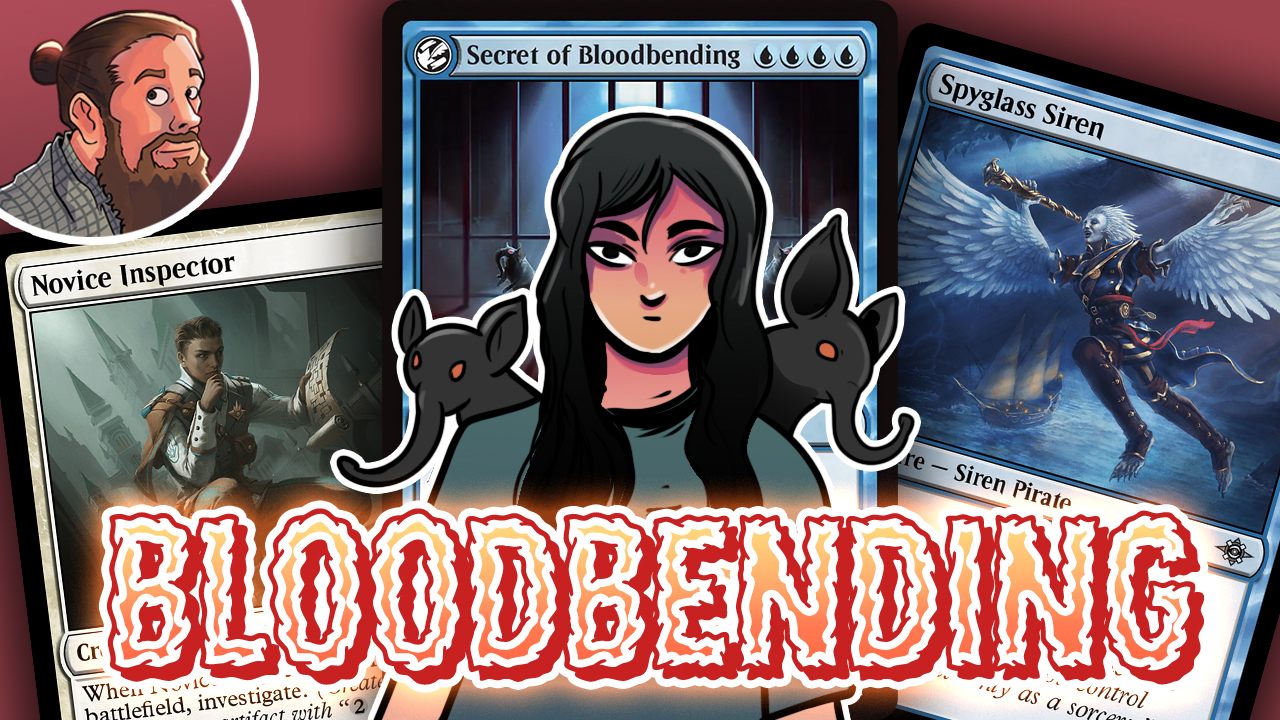Budget Magic: $89 (17 tix) Rakdos Aristocrats (Standard, Magic Online)
ᎣᏏᏲ, Budget Magic lovers, it's that time once again! This week, we're heading back to Ravnica Allegiance Standard to play one of my favorite styles of decks: Aristocrats! This build isn't the most combo-y version of Aristocrats in existence, instead being more of a Rakdos aggro deck with some sweet self-sacrifice synergies. The main plan of our deck is to get in some damage in the early game with cheap creatures and then finish our opponent off with some sneaky direct damage by sacrificing our own creatures for value, with cards like Priest of Forgotten Gods and Judith, the Scourge Diva. Can some sweet new Ravnica Allegiance cards make a self-sacrifice deck possible in Standard? Let's get to the videos and find out; then, we'll talk more about the deck!
First, a quick reminder: if you enjoy the Budget Magic series and the other video content on MTGGoldfish, make sure to subscribe to the MTGGoldfish YouTube channel to keep up on all the latest and greatest.
Budget Magic: Rakdos Aristocrats (Standard)

The Deck
Rakdos Aristocrats is basically a Rakdos aggro deck with some sweet self-sacrifice synergies to finish off the game. The main goal of the deck is to get in some damage over the early game with our creatures and then use direct damage, from our spells or with the help of sacrificing our own creatures, to close out the game.
Aggressive Starts


We start off our curve on Turn 1 with the help of Gutterbones and Footlight Fiend. Both cards do double duty in our deck. In the early game, they get in some combat damage and start diminishing our opponent's life total. Then, later in the game, they give us some great sacrifice fodder. We can sacrifice Gutterbones for value and then return it from our graveyard to our hand for just two mana, while Footlight Fiend deals some extra damage when it goes to the graveyard. As far as the beatdown plan, Gutterbones is much better, giving us power for just a single mana, while Footlight Fiend is a bit less aggressive, although it does trade up with two-toughness creatures thanks to the extra damage it offers. Together, these cards give us eight one-drops to get our plan started on the first turn of the game and also give us some extra value in the late game.

In the two-drop slot, we start off with Goblin Instigator, which gives us two bodies with just a single card. While it's not the most powerful attacker, it does allow us to go wide, and more importantly, it gives us two bodies to sacrifice in the late game. It's especially good with Judith, the Scourge Diva, turning both of our creatures into 2/1s to get in some more damage.

Legion Warboss is absurd in our deck. Thanks to all of our removal, we have some games where we can simply clear our opponent's blockers out of the way and win the game with Legion Warboss and its tokens all by themselves. Meanwhile, if our opponent has blockers, we can wait until after Legion Warboss creates a token and sacrifice it for value, rather than smashing it into our opponent's blockers and losing it for nothing. The combination of being a solid card on its own and also synergizing with our self-sacrifice plans makes Legion Warboss the perfect three-drop in the slot.
Sacrifice Outlets

Fireblade Artist is one of the foundational cards of our deck. A 2/2 haste for two is already a decent threat, especially in a deck that's looking to be aggressive, and the ability to sac a creature on our upkeep to deal two damage to our opponent gives us an insane amount of reach in the late game, once the board gets clogged up with creatures. Many two-drops are good in the early game, but their value diminishes as the game goes along. Fireblade Artist solves this problem by being just as good late as it is early. In conjunction with Gutterbones coming back from the graveyard every turn or Footlight Fiend dealing extra damage when it dies, Fireblade Artist essentially gives us a free Shock (or even Lava Spike) every turn to close out the game once our opponent manages to put up some defense on the ground. While not being able to control when we sacrifice our creature is a bit of a drawback, the card is good enough as is to be one of the best cards in our deck.

Priest of Forgotten Gods is the reason to play Rakdos Aristocrats. As we saw during our matches, if it sits out on the battlefield, it essentially wins us the game all by itself, with the help of all of our janky Goblin tokens and recursive threats like Gutterbones to sacrifice. While having to sacrifice two creatures might seem like a lot, when you consider that Gutterbones comes back from the graveyard (conveniently for two mana, which the Priest makes) and Legion Warboss make a free token every turn, we have a lot of creatures that are easy to sacrifice. Thankfully, the payoff is immense. Not only do we force our opponent to sacrifice a creature (which allows us to essentially lock Mono-Blue Tempo out of playing Magic), but the two damage (or more, if we have a Judith, the Scourge Diva on the battlefield) adds up quickly to close out the game. Oh yeah, and we also get to draw a card to find more sacrifice fodder, removal, and payoffs! The only downside of Priest of Forgotten Gods is that it does tend to die a lot, but in the games where it stays on the battlefield, it's hard to lose.
The Payoffs

Outside of maybe Priest of Forgotten Gods, Judith, the Scourge Diva is the best card in our deck since it's great with both our aggro creature beats plan and with our aristocrats self-sacrifice plan. When it comes to beating down, Judith, the Scourge Diva turns all of our random 1/1s into more meaningful attackers, allowing us to force through a bunch of damage. Meanwhile, once we start sacrificing our creatures to Fireblade Artist and Priest of Forgotten Gods, Judith, the Scourge Diva gives extra damage, pinging something for each non-token creature that dies. While less important, Judith also offers us a bit of protection from sweepers, punishing our opponent for sweeping our board. Even though the three-drop is legendary, it's an easy four-of in the deck, since we're probably winning if we have one sitting on the battlefield, and if the first one dies, we want another copy as quickly as possible. It's that important to the deck.
Other Stuff



Rounding out the deck is a bunch of burn in Shock, Lightning Strike, and Skewer the Critics. In the early game, these cards allow us to clear blockers out of the way to keep attacking with our creatures, and then in the late game, they combine with Priest of Forgotten Gods, Fireblade Artist, and Judith, the Scourge Diva to give us an absurd amount of reach. Thanks to these cards, along with our weird creature burn, we don't really need to get in that much damage with our creatures to be able to finish our opponent off after they stabilize the board or deal with our creatures, making them very good in our deck.

Theater of Horrors is just a one-of, but it gives us a bit of card advantage for slower, more controlling matchups. Against various control decks, if we can slip Theater of Horrors through our opponent's counters, it gives us a chance to keep up in terms of raw card draw. While it doesn't come up all that often since it's so expensive, we can occasionally get in a bit of extra damage with the "ping" ability if we run out of other things to do, but Theater of Horrors is mostly in the deck to be a weird version of Phyrexian Arena, drawing us an additional card every turn.
The Mana



The mana for Rakdos Aristocrats is pretty simple: 20 lands, with a total of 10 dual lands. This being said, it's not 100% optimal. One of the drawbacks of Ravnica Allegiance Standard is that shock lands and check lands are pretty expensive, making it hard to build decks with optimal mana on a $100 budget. As such, we're only playing two Blood Crypt and instead playing four copies of Rakdos Guildgate. While having four tapped lands is annoying, especially for a deck that's looking to curve out and be aggressive, it's not the end of the world. However, if you have a full playset of Blood Crypt, you should drop the Rakdos Guildgates altogether and play four Blood Crypt, four Dragonskull Summit, and a bunch of basic lands.
Wrap-Up
Rakdos Aristocrats was great! We played five matches and won four of them, which is pretty solid for a budget deck. Our one loss was to a weird build of UW Control that was an almost laughably bad matchup for our deck, thanks to an insane amount of lifegain. In general, the control matchup isn't that bad (recursive threats like Gutterbones and wrath protection in Judith, the Scourge Diva help), but I'm not sure we'd ever beat that specific build of control. It seemed like it was built specifically to destroy aggressive decks. While we did play a couple of brews (Simic Merfolk and Rakdos Goblins), we also took down Esper Midrange, one of the hottest new decks in the format, and we pretty much locked Mono-Blue Tempo out of the game with Priest of Forgotten Gods.
As for changes I'd make to the budget build of the deck, I'm actually really happy with how it turned out. It might be worth dropping the one copy of Theater of Horrors for a fourth copy of Legion Warboss (which was great in this deck). Otherwise, I'm not sure I'd change anything in the main deck. Another option is moving Drill Bit to the main deck. Thanks to all of our one-drops and odd ways to damage our opponent, it's pretty easy to turn it into a painless Thoughtseize early in the game, which is good in just about every matchup. The only problem is that I'm not sure what to cut. We might be able to trim back on some of the burn spells, although the absurd amount of reach is one of the most powerful aspects of the deck.
All in all, Rakdos Aristocrats felt like a really solid budget option for the format. While the deck was competitive, more importantly, it was fun to play. One of the drawbacks of aggro is that aggro decks can sometimes lead to really repetitive (and arguably boring) gameplay, but thanks to all of the fun self-sacrifice synergies in Rakdos Aristocrats, there are actually a lot of interesting decisions with the deck, which ups the replayability. If you like attacking and sacrificing your own creatures for value, give it a shot!
Arena / Ultra-Budget Rakdos Aristocrats

Getting Rakdos Aristocrats down in the ultra-budget range is pretty easy: we just cut all of the rare lands and replace them with Cinder Barrens. While having eight tapped lands is painful for an aggro deck, there isn't really another way to get the deck down close to $50 in paper. The other upside of this plan is that it makes the deck fairly inexpensive on Magic Arena as well, with the main deck requiring just 16 rares and zero mythics. Unfortunately, there isn't a good way to cut even more rares from the deck. In theory, you could replace Gutterbones with something like Fanatical Firebrand, but losing one of our best sacrifice creatures would make the deck less like an Aristocrats deck and more of a straightforward Rakdos aggro build.

Our non-budget build is almost the opposite of the ultra-budget build: pretty much everything stays the same in the main deck, except we get to improve the mana by dropping the tapped lands and playing a full playset of Blood Crypt. Otherwise, we get to tune the sideboard with an improved removal suite featuring Bedevil and Lava Coil, along with some Rekindling Phoenixes to give us a recursive threat that also blocks really well against cards like Crackling Drake and Izzet Phoenix. The biggest change here is certainly the mana base. While the deck functioned alright with the tapped lands, it functions a lot better with a full set of the optimal duals.
Conclusion
Anyway, that's all for today. As always, leave your thoughts, ideas, opinions, and suggestions in the comments, and you can reach me on Twitter @SaffronOlive or at SaffronOlive@MTGGoldfish.com.













